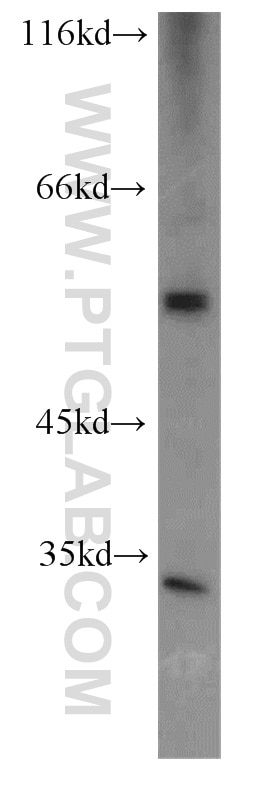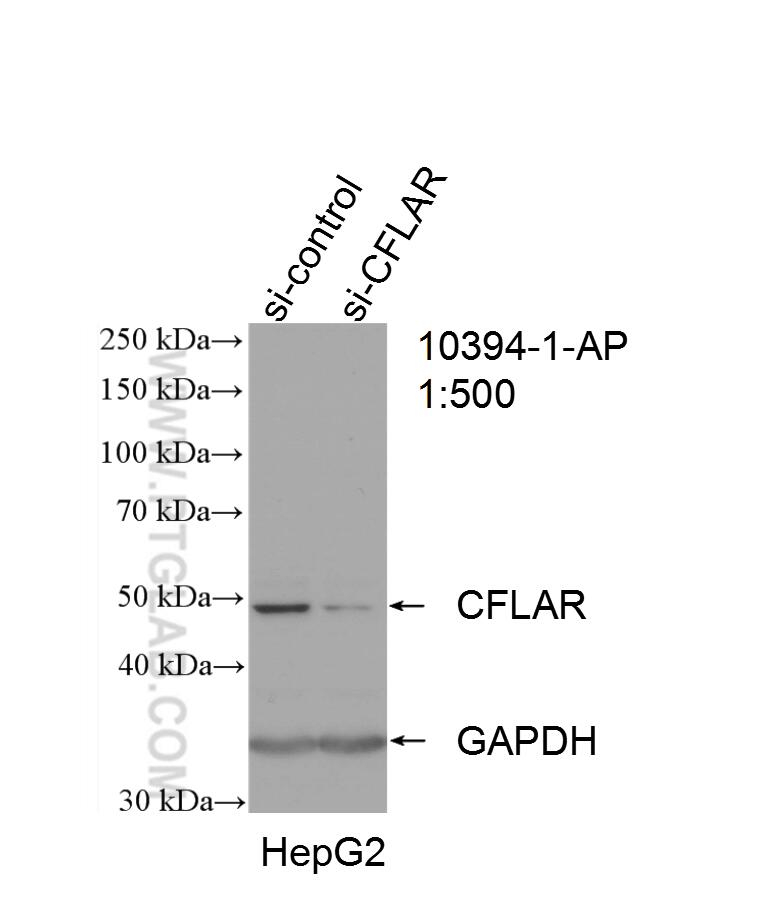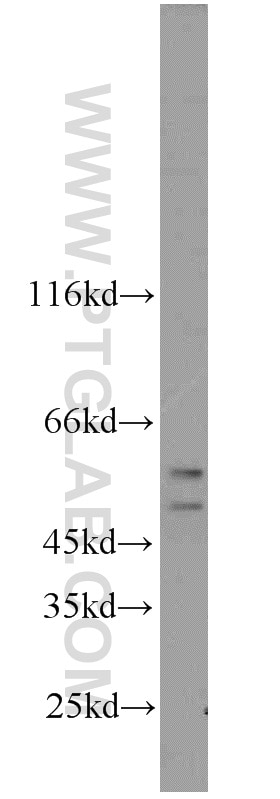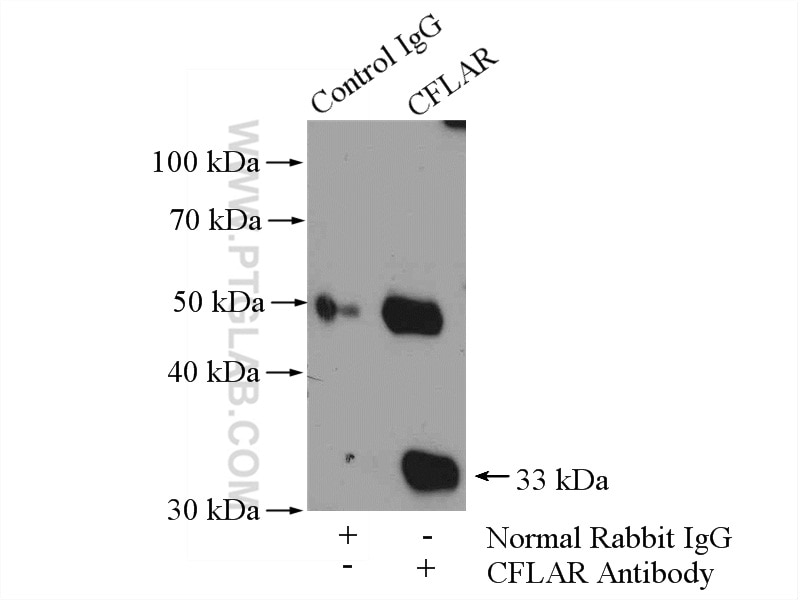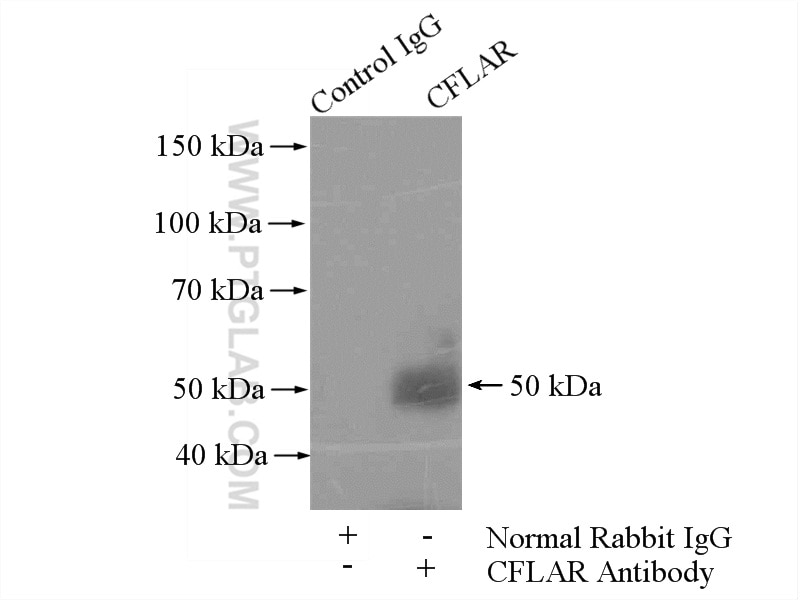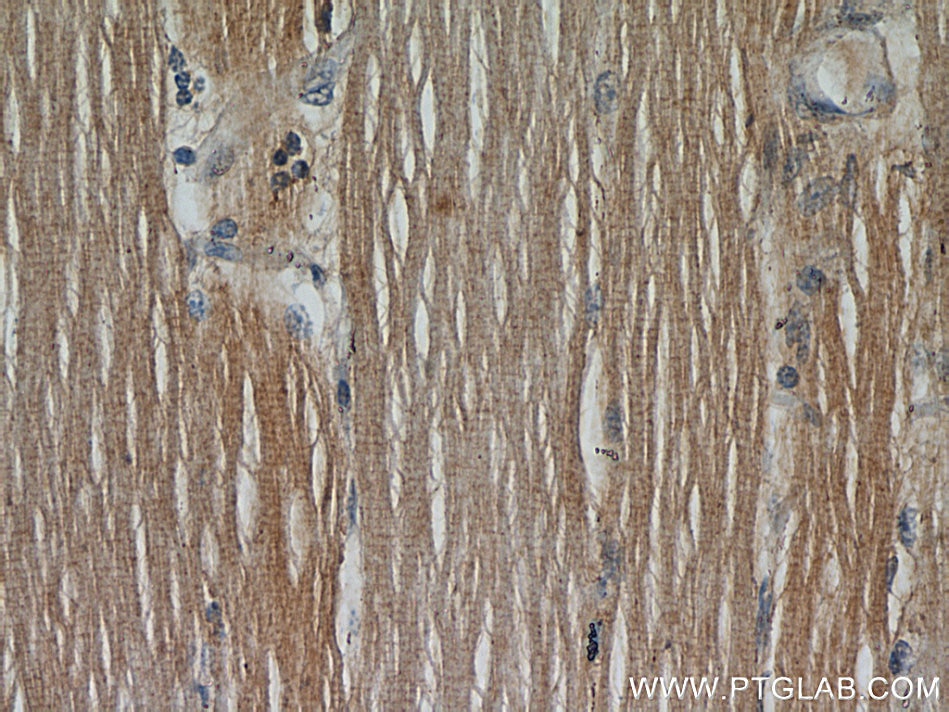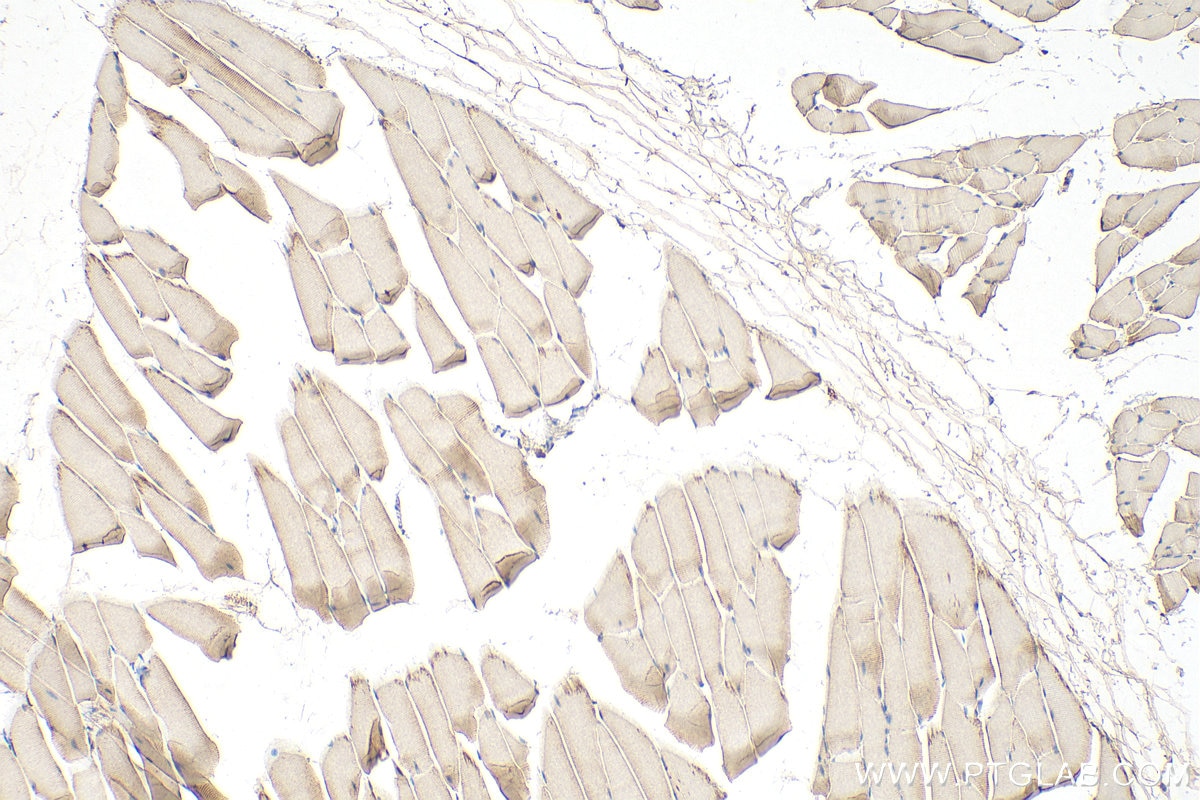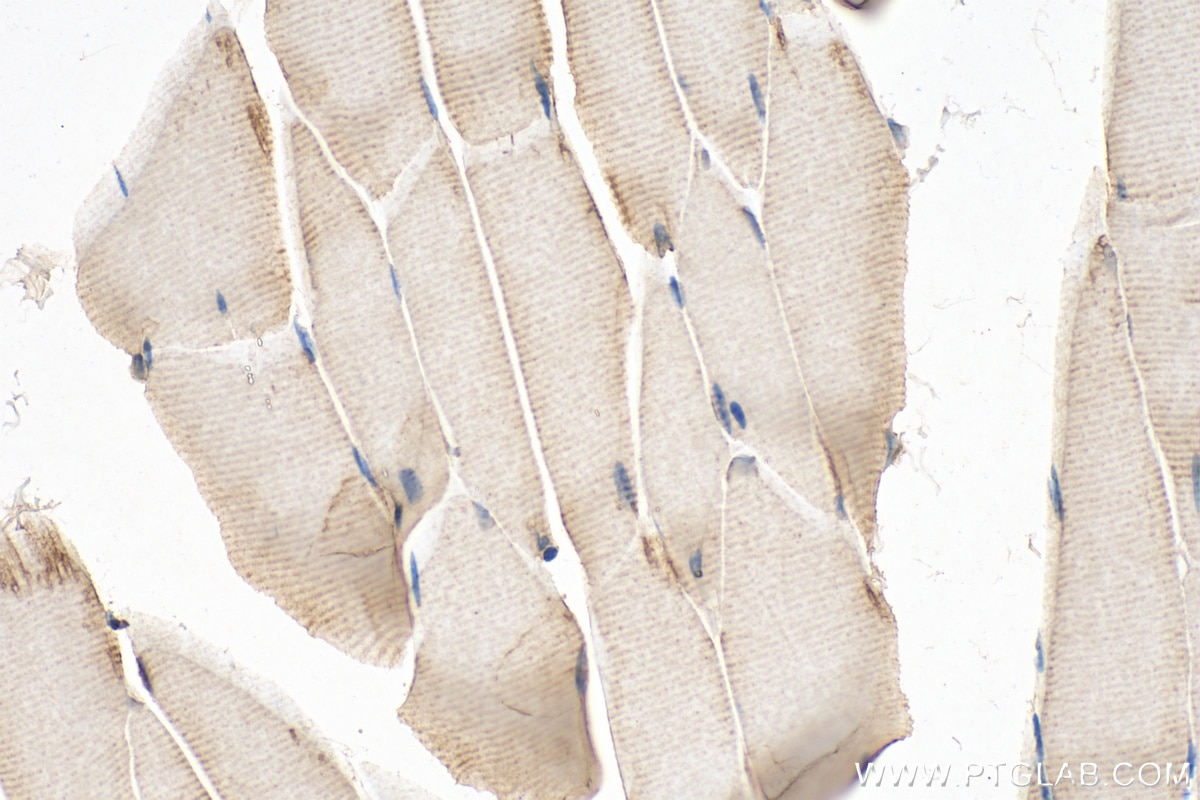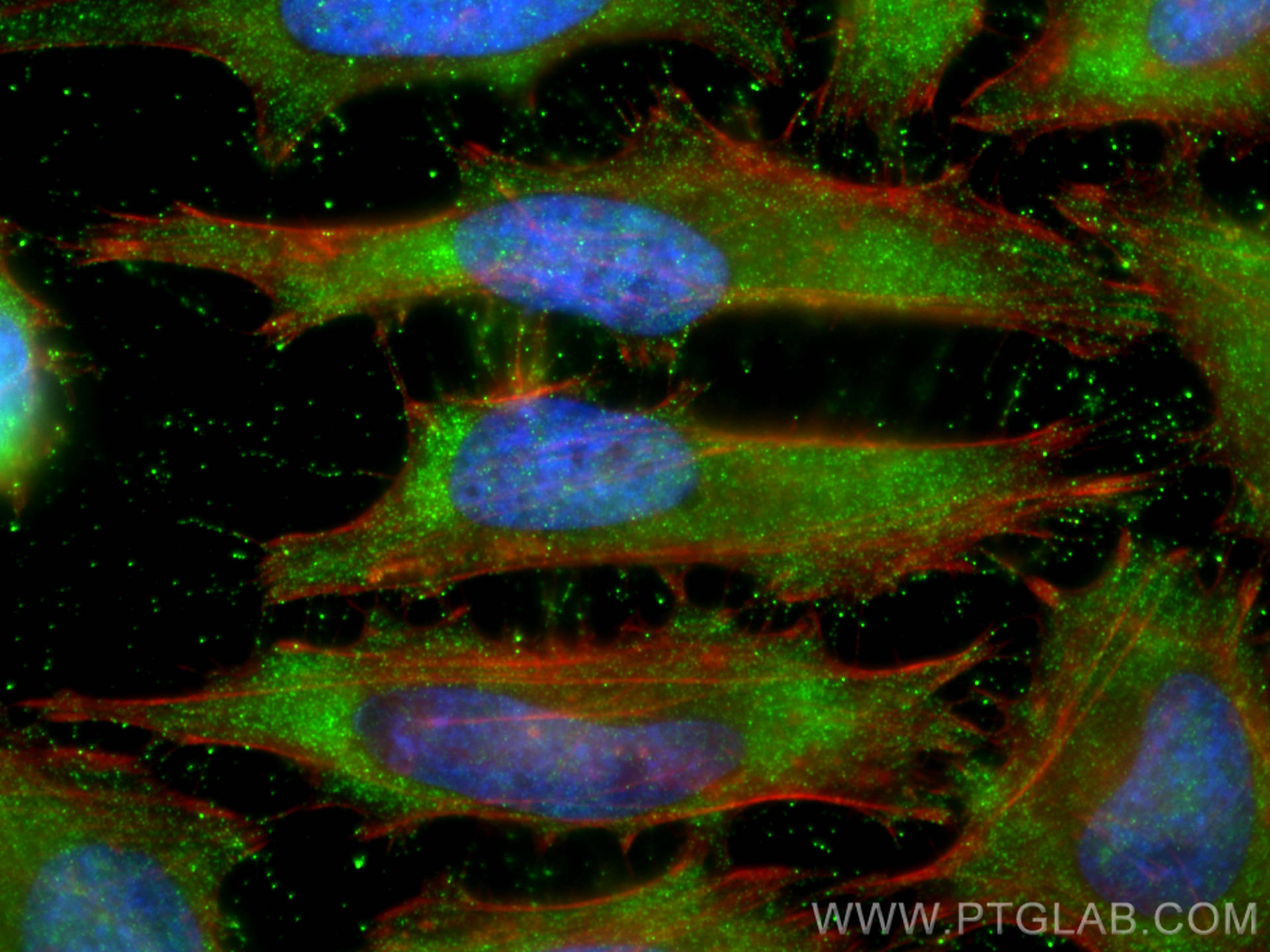Tested Applications
| Positive WB detected in | Jurkat cells, HepG2 cells, HeLa cells |
| Positive IP detected in | Jurkat cells |
| Positive IHC detected in | mouse skeletal muscle tissue, human skeletal muscle tissue Note: suggested antigen retrieval with TE buffer pH 9.0; (*) Alternatively, antigen retrieval may be performed with citrate buffer pH 6.0 |
| Positive IF/ICC detected in | HeLa cells |
Recommended dilution
| Application | Dilution |
|---|---|
| Western Blot (WB) | WB : 1:500-1:2000 |
| Immunoprecipitation (IP) | IP : 0.5-4.0 ug for 1.0-3.0 mg of total protein lysate |
| Immunohistochemistry (IHC) | IHC : 1:50-1:500 |
| Immunofluorescence (IF)/ICC | IF/ICC : 1:200-1:800 |
| It is recommended that this reagent should be titrated in each testing system to obtain optimal results. | |
| Sample-dependent, Check data in validation data gallery. | |
Published Applications
| KD/KO | See 1 publications below |
| WB | See 9 publications below |
| IHC | See 1 publications below |
Product Information
10394-1-AP targets CFLAR/FLIP in WB, IHC, IF/ICC, IP, ELISA applications and shows reactivity with human, mouse samples.
| Tested Reactivity | human, mouse |
| Cited Reactivity | human, rat |
| Host / Isotype | Rabbit / IgG |
| Class | Polyclonal |
| Type | Antibody |
| Immunogen |
CatNo: Ag0593 Product name: Recombinant human CFLAR protein Source: e coli.-derived, PGEX-4T Tag: GST Domain: 31-184 aa of BC001602 Sequence: DVVPPNVRDLLDILRERGKLSVGDLAELLYRVRRFDLLKRILKMDRKAVETHLLRNPHLVSDYRVLMAEIGEDLDKSDVSSLIFLMKDYMGRGKISKEKSFLDLVVELEKLNLVAPDQLDLLEKCLKNIHRIDLKTKIQKYKQSVQGAGTSYRN Predict reactive species |
| Full Name | CASP8 and FADD-like apoptosis regulator |
| Calculated Molecular Weight | 52 kDa |
| Observed Molecular Weight | 20-35 kDa, 50-55 kDa |
| GenBank Accession Number | BC001602 |
| Gene Symbol | FLIP |
| Gene ID (NCBI) | 8837 |
| RRID | AB_2081087 |
| Conjugate | Unconjugated |
| Form | Liquid |
| Purification Method | Antigen affinity purification |
| UNIPROT ID | O15519 |
| Storage Buffer | PBS with 0.02% sodium azide and 50% glycerol, pH 7.3. |
| Storage Conditions | Store at -20°C. Stable for one year after shipment. Aliquoting is unnecessary for -20oC storage. 20ul sizes contain 0.1% BSA. |
Background Information
CFLAR, also named CASH, CASP8AP1, CLARP, MRIT, Casper, c-FLIP, and I-FLICE, belongs to the peptidase C14A family. It is an apoptosis regulator protein that may function as a crucial link between cell survival and cell death pathways in mammalian cells. CFLAR acts as an inhibitor of TNFRSF6-mediated apoptosis. It can be cleaved to be 2 fragments P43 and P12. P43 is likely retained in the death-inducing signaling complex (DISC) thereby blocking further recruitment and processing of caspase-8 at the complex. Full-length and shorter isoforms have been shown either to induce apoptosis or to reduce TNFRSF-triggered apoptosis. CFLAR lacks enzymatic (caspase) activity.
Protocols
| Product Specific Protocols | |
|---|---|
| IF protocol for CFLAR/FLIP antibody 10394-1-AP | Download protocol |
| IHC protocol for CFLAR/FLIP antibody 10394-1-AP | Download protocol |
| IP protocol for CFLAR/FLIP antibody 10394-1-AP | Download protocol |
| WB protocol for CFLAR/FLIP antibody 10394-1-AP | Download protocol |
| Standard Protocols | |
|---|---|
| Click here to view our Standard Protocols |
Publications
| Species | Application | Title |
|---|---|---|
Cancer Res DAB2IP is a bifunctional tumor suppressor that regulates wildtype RAS and inflammatory cascades in KRAS mutant colon cancer | ||
Cell Death Differ Coordinated repression of BIM and PUMA by Epstein-Barr virus latent genes maintains the survival of Burkitt lymphoma cells. | ||
J Cell Mol Med Exercise ameliorates insulin resistance and improves ASK1-mediated insulin signalling in obese rats. | ||
Biomed Pharmacother Regorafenib suppresses epidermal growth factor receptor signaling-modulated progression of colorectal cancer. | ||
Oncol Lett YM155 sensitizes HeLa cells to TRAIL-mediated apoptosis via cFLIP and survivin downregulation. | ||
Mol Med Rep Chidamide induces necroptosis via regulation of c‑FLIPL expression in Jurkat and HUT‑78 cells. |

